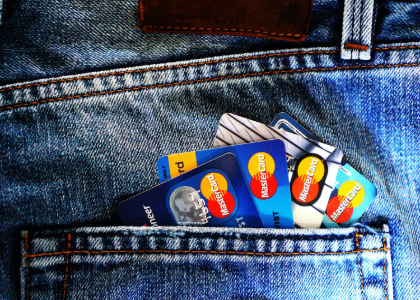Blog

Starting a Business: How to Find Your First Customers
The 21st century has seen an increased number of start-ups. The reason is governmental aid to uplift great ideas with the potential to boost the economy and build a stronger nation. But the primary credit for the constantly evolving and growing start-up culture goes to an entrepreneur. An entrepreneur is a person of courage who believes in his idea to change an industry, community, or world at large.
Establishing a business involves many phases, such as research, market analysis, funding, and identifying customers. Often people think that post setting up a business and getting your product to hit the market, the job of an entrepreneur comes to rest. From hereon, the entrepreneur functions in the capacity of an observer than a contributor. This is a wrong notion.
The real work of an entrepreneur begins once the product or service reaches the market. For an entrepreneur, his business is supreme to others. The task begins when he has to share his beliefs, values, and vision with his first customers. Once the first set of customers starts engaging with the offering of a business, the next stage of consideration and loyalty begins.
In a marketing cycle, there are five stages of a customer journey;
Awareness:
Imagine a market flooded with consumers who need to learn your business exists. At this stage, as a business owner, you need to reach out to consumers and make them aware of what you have to offer. No push notifications, no pressure to buy, just a nudge to let them know you exist. Then, the next time they visit a store or the area around your business, they remember you and are more likely to give your offer a chance in their buying cycle. In this phase, you need to communicate the actual problem or need that your potential customer may have to find a use for you in their life. This phase is the crux of the matter for any new business trying to find and appeal to its first customers.
Consideration:
After consumers are aware of your offer, they enter the consideration phase.
The consideration cycle is a phase after they learn about your business. In this stage, consumers may research and evaluate products or services before making a purchase decision. During this phase, the company must communicate its 'Reason-To-Believe" superiority over the competition. Marketing and advertising campaigns appeal to consumers at different stages of the consideration cycle and influence their decisions. Understanding that the consideration cycle is dynamic for early customers, who may move back and forth between or skip stages, is essential. Brand loyalty, price, and product availability influence consumer decision-making.
Conversion:
Conversion is an essential metric in the consumer journey. It indicates that a consumer not only considers your offer but also takes action and becomes a customer.
Conversion refers to the point at which a consumer takes a specific action, such as making a purchase or signing up for a service. At this stage, all forms of marketing and advertising communications must aim to increase conversion rates by including a "call to action" in all promotional materials. This means you need to prompt the consumer to take a specific action. An action item could be visiting a website and filling out a lead form, visiting a store and buying your product, or getting a consultation from your company. To improve conversion rates you can use methods such as A/B testing and optimization techniques to improve conversion rates. Conversion rate is a metric that indicates the percentage of visitors to a website or landing page who take a specific action.
Loyalty:
The first customers are vital in developing a chain reaction of loyalty. The loyalty stage is an absolute reflection of a customer's pleasant experience with your company. A loyal customer is likelier to purchase again, recommend the brand to others, and is less price sensitive. A loyal customer is a valuable asset to any business. They have a higher lifetime value, which means they and future generations can remain faithful to your offerings. The best example of loyalty is 'Coca-Cola." This brand has been around for ages and is integral to family reunions in many countries. Some factors that affect a customer's loyalty are the consistency of a product, the level of personalization, and the rewards of being a loyal customer.
Advocacy:
The most significant milestone in an entrepreneur's life is turning their first customers into advocates. Aside from promoting the business, this act of advocacy strengthens the market's confidence in the company's offerings and builds a reputation to which a more extensive network will attest. With the ability to submit reviews and feedback at the click of a mouse, advocates are today's brand ambassadors, ready to talk about the brand, post about it, and help the company expand its reach. Community building and advocacy are considered effective strategies in customer acquisition programs.
Finding initial customers takes time, persistence, and patience. Here are some ways a business can find its first customers;
Networking:
Networking can be an effective way to find your first clients. You can network with your potential clients and people in the industry at a networking event. Events like trade associations, industry discussions, and a similar product line launch can benefit networking. You can participate in online discussion forums or comment on a social media post about your topic to gain the attention of a potential customer.
Referrals:
This technique is the lowest-hanging fruit in finding your first clients. It can be beneficial to recruit friends, family, and colleagues who have good relationships with you. With a referral program, you can incentivize existing customers to refer their friends and family to your business. With email marketing, you can remind your customers about the referral program and give them the tools they need to recruit new customers.
Self-branding:
Self-branding means building yourself as a brand to represent your business. This method has proven successful for today's influencers. Self-branding is to present yourself as a brand ambassador for your company and the value it has added to your life. For example, a person who owns a hair oil company can make people aware of the difference the product has made in his personality. He can then provide a sample, followed by a business card with a website address and order number.
Online marketing:
Online marketing methods such as social media presence, writing informative blogs, and building a website are effective ways to attract initial customers. Investing in online advertising such as Google AdWords, Facebook Ads, and Instagram Ads can help reach a larger audience and drive more traffic to your website.
Remarketing:
Remarketing ads to previous website visitors interested in your products or services effectively increase brand recognition. The more often you are seen by your potential customers, the more likely they are to buy from you. Creating custom audiences based on specific pages, sections, or interests on advertising platforms can help you find a particular group of audiences interested in engaging with your business online. Remarketing campaigns can help you bring them back to your website and convert them into customers.
Cold calling:
Cold calling has traditionally proven effective but can sometimes become intrusive. To get your first customers, it's better to thoroughly research consumer interests before calling them. You must obtain the database legally to avoid bad publicity from someone who may not be willing to engage with your company. Yet, for years cold-calling has proven to be an effective method for business development.
Collaborations:
Partnerships with other companies that serve a similar customer base can help you reach new customers. Collaboration can be effective in achieving an established brand's database. Here, you can introduce your brand to people who are already interested in your category. Collaborating with thought leaders in your industry can help you reach a larger audience and gain credibility. The collaboration between food brand Cheetos and fashion brand Forever 21 has created a buzz with the launch of Cheetos Branded Fashion Wear.
Influencer Marketing:
In the world of influencers, collaborating with them is considered one of the best marketing strategies. An influencer can help spread the word about your brand without looking like an ad campaign. Here, they can share their honest reviews about their experience with your product or service. They can also create solid and measurable recommendations for their followers. Influencer marketing can be an excellent sampling activity with the help of rewarding contests.
Public Relations:
Publicity is about attracting customers and building a good reputation and trust in your company. This method will help you attract more customers and investors when you are looking for funding. When you start your business, you can publicize it by sending a press release to local and national media. In this press release, you can address critical points such as benefits and availability to address immediate buying cycles. Using social media to connect with journalists and bloggers who can cover your story can also be helpful.
Testimonials:
In online reviews, testimonials can make or break a business. It can be challenging to secure a testimonial when looking for your first customers. In such cases, sampling your peers and recording their reactions as a testimonial can do wonders for your business. By posting these honest testimonials on your website and social media, you can emphasize the truthfulness and loyalty of your business. Testimonials can also help a company improve elements that could be more satisfactory. With these improvements, the product or service can provide better experiences and services to customers.
Offline advertising:
Traditional advertising methods will always succeed. There are still a large number of people who read newspapers, listen to the radio, and feel inspired by an advertising slogan on a billboard. Research and determine your target audience before creating a communications plan. Targeting your advertising to the most relevant audience is essential, such as placing ads in publications or locations your ideal customers frequently visit. In addition, a clear call to action, such as a special offer or website URL, can help convert interested individuals into paying customers.
Guerrilla marketing:
Guerrilla marketing is a creative and cost-effective way to attract initial customers and promote your business. It involves using unconventional and unexpected tactics to grab people's attention and create a buzz. One of the most common forms of guerrilla marketing is flash mobs. Street performances or flash mobs draw crowds and promote your business. They can also be an excellent sampling platform. Working with influencers to create viral videos can help spread the word about your business. For companies with a brick-and-mortar store, hosting a pop-up event or setting up a temporary storefront in a high-traffic area can attract attention and inspire visitors. The key to successful guerrilla marketing is creativity, memorability, and the unexpected.
Starting a business takes hard work and dedication, but you can find your first customers and grow your business with the right attitude and approach.
Market research to determine your target audience, their needs, and how your product or service meets those needs is the nuts and bolts of any business. A solid business plan that outlines your goals, strategies, and financial projections is critical to attracting investors. Build a reliable network to connect with other entrepreneurs, industry experts, and potential clients. Conduct testing with friends, family, and focus groups to get feedback and improve your product before launch. Develop a marketing mix to communicate with your target audience at various touch points along their journey, from learning about your product to buying it. Remember that prospecting takes time, persistence, and patience. Make sure you have a clear value proposition and a well-defined target market to increase your chances of success.
More tips and tricks on the blog


